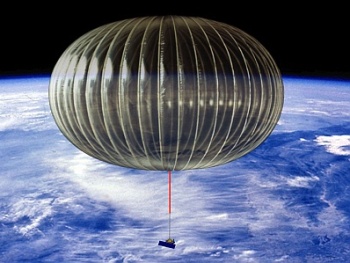Purpose of the flight and payload description
A project to develope a balloon system capable of providing scientific measurements for 100-day missions with floating altitude close to 35km transporting payloads of near 1.5 tons.
It is a super-pressure balloon made of a composite fabric (polyester + polyethylene film and fabric) that is filled with Helium and hermetically sealed. Meridional tendons provide additional rigidity to the envelope. The pressure inside the envelop is maintained above the ambient pressure at all times to keep the balloon afloat at a constant altitude. During daytime the internal pressure increases due to solar heating but the volume remains constant due to the rigidity of the envelope. At night the pressure drops due to infrared radiative cooling to space, but as long as the internal pressure remains above the ambient pressure, the balloon stays at the same altitude.
On the future, transported by stratospheric winds around the globe at 30m/s the ULDB would be make a full circunnavegation to Earth in about 2 weeks.
Details of the balloon flight
Balloon launched on: 10/13/1998
Launch site: Scientific Flight Balloon Facility, Fort Sumner, (NM), US
Balloon launched by: National Scientific Balloon Facility (NSBF)
Balloon manufacturer/size/composition: Zero Pressure Balloon 2.000 m3
Flight identification number: 461NT
End of flight (L for landing time, W for last contact, otherwise termination time): 10/13/1998
External references
- NASA Balloon Flights (1989-1998) in NASA Historical Data Book, Vol. VII: NASA Launch Systems, Space Transportation, Human Spaceflight, and Space Science, 1989-1998
655If you consider this website interesting or useful, you can help me to keep it up and running with a small donation to cover the operational costs. Just the equivalent of the price of a cup of coffee helps a lot.


